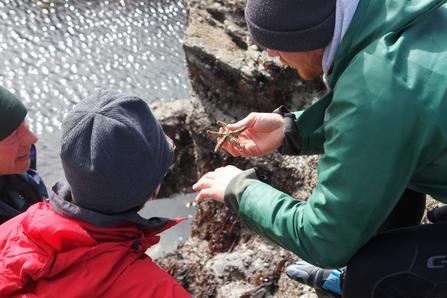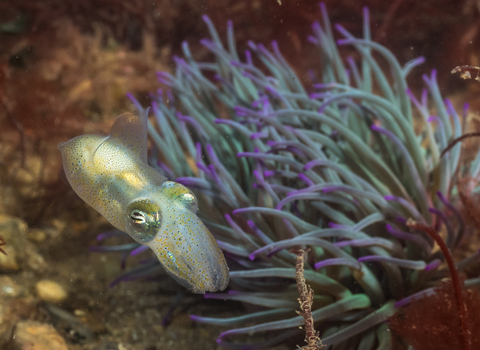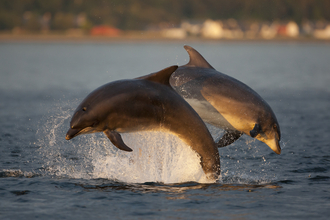A citizen science approach
Shoresearch is The Wildlife Trusts' national citizen science survey of the intertidal shore, the exciting world of extremes where the sea meets the land. It's a great way to explore your local coast, learn more about the wildlife found there and add to our understanding of this important habitat.
Volunteers are trained to identify and record the wildlife on shores across the UK. The data collected by this project helps experts to monitor our fragile sea life and better understand the effects of pollution, climate change and invasive alien species. Shoresearch data has been key to designating many of our Marine Conservation Zones.

Shoresearch volunteers looking at a spiny starfish ©Mat Arney/Cornwall Wildlife Trust
The beginning of Shoresearch
In 2003, Kent Wildlife Trust realised that a lack of baseline data was making it difficult to assess the health of our shores. Knowing they had an enthusiastic group of volunteers for the Kent coast, Kent Wildlife Trust trained a team to identify and record intertidal plants and animals, and their habitats. Through a series of surveys, the volunteers and staff at Kent Wildlife Trust developed a substantial baseline data set, and Shoresearch was born.
The new Shoresearch
In 2019, The Wildlife Trusts' inspirational and engaging citizen science project relaunched with new, even more robust methods. With standardised survey techniques used by Shoresearch volunteers across the country, we will be learning more about the wildlife on our shores than ever before. There are four types of survey involved:
Quadrat Biodiversity Survey
The Quadrat Biodiversity Survey is for shores of hard substrate (rocky, pebbles/shingle, bedrock) and involves collecting species abundance and habitat data at random points, in a selected area of the intertidal zone, using a quadrat.
Box Corer Biodiversity Survey
The Box Corer Biodiversity Survey is for intertidal sediment shores (sand, mud, silt) and involves collecting species abundance and habitat data at random points, in a selected area of the intertidal zone, using a corer.
Timed Species Search
During this survey a select list of species are searched for across an area of shore within a fixed time period to assist with the monitoring of their distribution around the UK.
Walkover Survey
The Walkover Survey is for shores of hard substrate (rocky, pebbles/shingle, bedrock) and involves collecting qualitative information on species found within a selected area of the intertidal zone.












